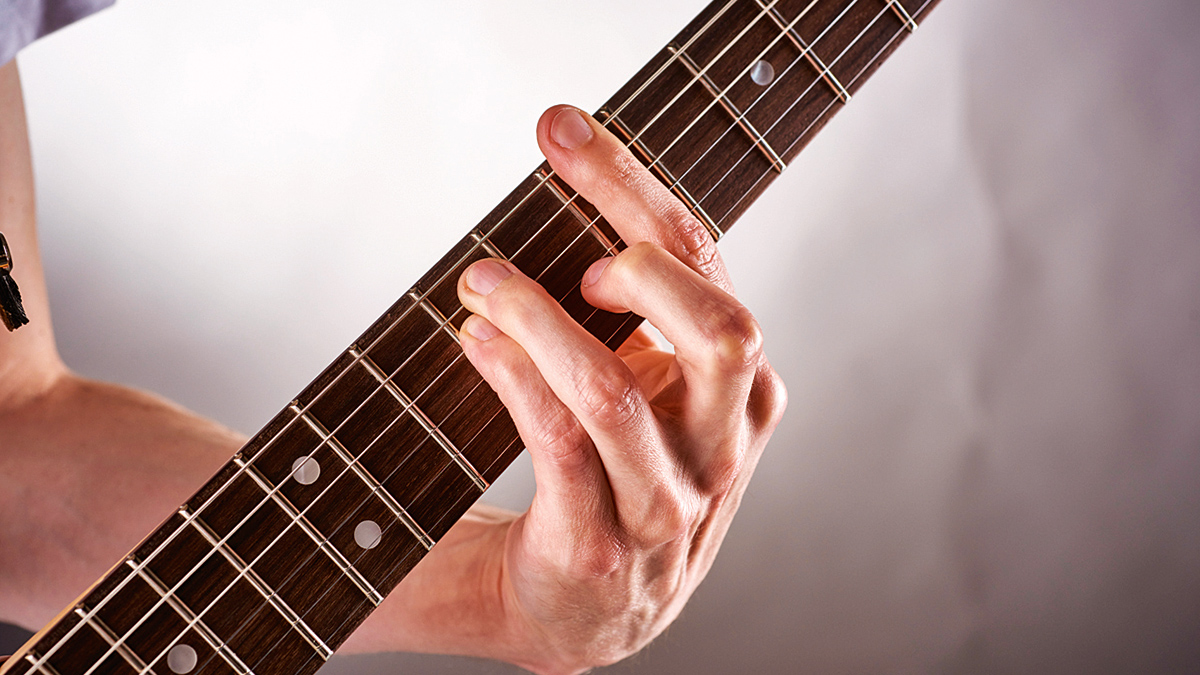How to master CAGED guitar chords and unlock the fretboard
The CAGED guitar system is a speedy route to fretboard mastery – and you'll learn some cool new chords along the way

A great all-round rhythm player needs really good chord knowledge. There are two ways to develop this part of your playing. The first is simply to learn some new chords – and this is fun, a journey of discovery with new sounds and moods.
The other method is to learn how chords link together when played in various positions on the fretboard. It’s known as the CAGED system, because you’ll be looking at C, A, G, E and, yep, you guessed it, D chord shapes.
Get to grips with it and you’ll soon be playing the best riffs and rhythm parts ever, as you navigate the whole fretboard in the process. Read on and we’ll show you more...
Major chords
We start here with five C chords, including the good old open shape. Your task is to see how they link together across the fretboard. The first barre chord shares the root note with open C.
This resembles an open A chord, so it gets called an “A shape” even though it could be any pitch – C here, of course. Play the chords one after the other, then see if any ideas come to mind.
Minor chords
Once again, the idea is to see where these chords share notes – the idea being that you could create cool rhythm parts across the entire fretboard.
Though a couple of these shapes are tough to play, it’s still useful to see how they link together. And there’s nothing to stop you playing an easier “partial” version – just fret three strings instead of the full shapes.
All the latest guitar news, interviews, lessons, reviews, deals and more, direct to your inbox!
E shape chords
Here, we’ll turn our attention to fresh sounds, in particular, some variations on the open E chord we all know. Try them out in open position, then see if you can make them work as closed position barre chords.
A shape chords
This is a similar approach to the previous example, but with the open A chord as our starting point. Once again, try out the chords in open position and choose your favourites. If you can also make them work as barre chords you’re acing it!
D shape chords
One more time! Here we’re looking at some creative variations on the humble open D chord. Some of these can be tricky when played as barres, so take it slow and focus on accurate fretting before any changes.
Foo Fighters-style sus chords
The sus2 chord we’re using here sounds great with a light overdrive and provides a contrast when followed by some dissonant sounding stabs. The D7/A chord we used for the stabs is a bit of a Dave Grohl favourite!
Chords with open strings
This part uses the open string to create a lush, ringing sound with plenty of sustain. Incorporating the open strings into pretty basic fingerings is an easy way to generate more harmonically rich sounding chords.
Chris was Editor of Total Guitar magazine from 2020 until its closure in 2024, when he became Lesson Editor for Guitar World, MusicRadar and Guitar Player. Prior to taking over as Editor, he helmed Total Guitar's world-class tab and tuition section for 12 years, helping thousands of guitarists learn how to play the instrument. A former guitar teacher, Chris trained at the Academy of Contemporary Music (ACM) in Guildford, UK, and held a degree in Philosophy & Popular Music. During his career, Chris interviewed guitar legends including Brian May and Jimmy Page, while championing new artists such as Yungblud and Nova Twins. Chris was diagnosed with Stage 4 cancer in April 2024 and died in May 2025.








